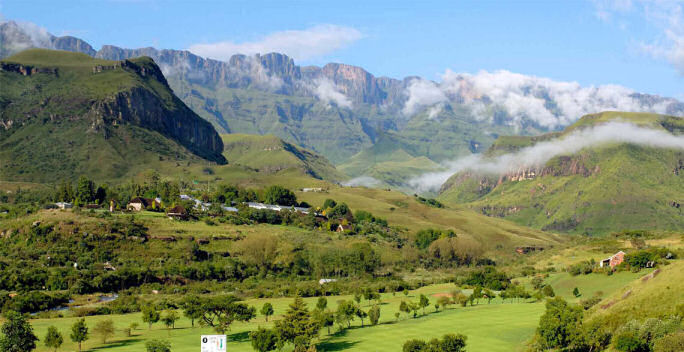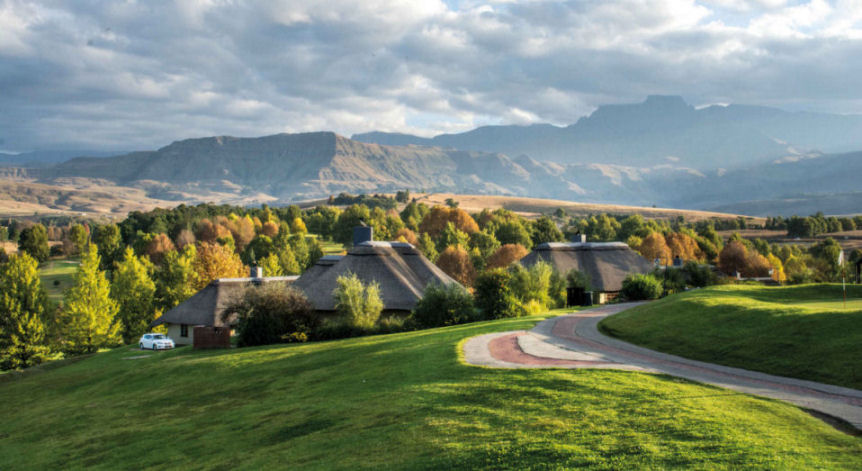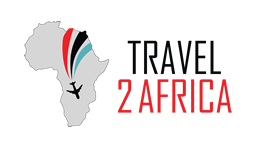The Drakensberg includes the highest mountains in Southern Africa. The name means Dragon Mountains in Afrikaans and is called uKhahlamba in Zulu which means "barrier of spears". Large parts of the Drakensberg were declared a world heritage site in 2000 due to its ecological and cultural diversity. The range stretches over 300km (186 miles) along the edge of KwaZulu-Natal and completely encompasses The Kingdom of Lesotho.

The Drakensberg can be divided up into three main sections - the Northern Drakensberg, Central Drakensberg and Southern Drakensberg. These regions also include different parks and reserves as well as towns such as Ladysmith and Ixopo. The mountains draw both local and international tourists, who come to see the regions scenic beauty, beautiful flora, cultural history and the areas many hiking trails.
Within the Drakensberg of KwaZulu-Natal lies the 243 000-hectare mountain region that is also a world heritage site, known as Ukhahlamba-Drakensberg Park. Not only does it boast some of the most incredible scenic beauty, but it also has over 600 examples of San rock paintings in caves around the park.
The Drakensberg is not only about its famous mountain peaks - Giants Castle, Cathedral Peak, Mont-Aux-Sources - it is also graced with a number of lower peaks known as the foothills of the Drakensberg. The entire Drakensberg is riddled with incredible waterfalls, rock pools, mountain streams, caves, crisp mountain air, and special spaces that draw both visitors to South Africa and locals alike.

What makes it so popular, besides its sheer majesty, is its accessible plateau and the numerous passes and slopes that make for some of the best and most strenuous hiking in the province; possibly South Africa.
The Drakensberg was featured in the 2009 American science fiction film 2012. It was mentioned in the last scene of the movie, where after twenty-seven days of a great flood which people tried to survive by building arks, the waters began receding. The arks approach the Cape of Good Hope, where the Drakensberg (now the tallest mountain range on Earth) emerges.
The Drakensberg area is "home to 299 recorded bird species"' making up "37% of all non-marine avian species in southern Africa.” There are 24 species of snakes in the Drakensberg, two of which are highly venomous. The mountains are rich in plant life, including a large number of species listed in the Red Data Book of threatened plants, with 119 species listed as globally endangered and "of the 2153 plant species in the park, a remarkable 98 are endemic or near-endemic”

You can visit and explore the Drakensberg as a day visitor but to fully appreciate all that the region has to offer, we recommend a stay of a few nights. The Drakensberg accommodation options include hotels, self-catering, Bed & Breakfast and fully catered, luxury lodges.

